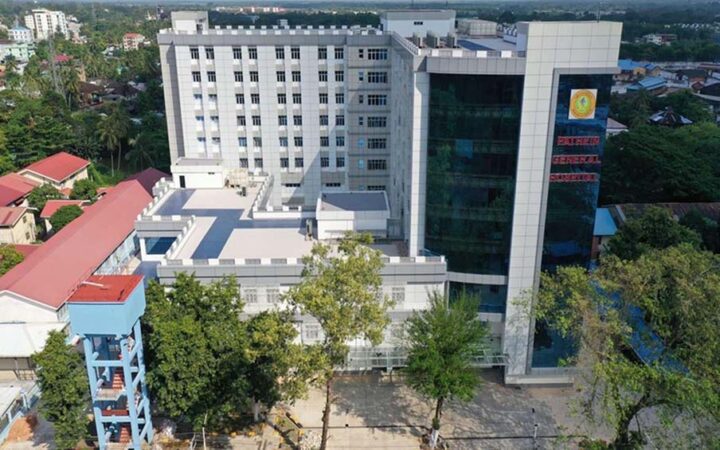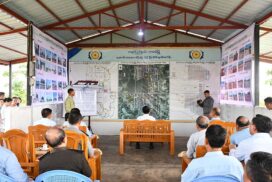Healthcare infrastructure encompasses various elements that contribute to a population’s health. It includes both physical and human resources such as physical facilities, personnel, support facilities, supplies and materials, data and information systems, and distribution mechanisms. Expanding hospital buildings is a strategic investment in healthcare infrastructure as it increases capacity, advanced technology, improved access to specialized services, job creation, and community confidence.
In Myanmar, the investment in new hospital buildings represents a significant step forward in the country’s healthcare infrastructure. The new hospital buildings are equipped with modern medical technology and facilities to provide better care to patients. These facilities aim to address the healthcare needs of a growing population and to enhance the quality of medical services available in the country.
The new hospital buildings are a significant event that marks the culmination of extensive planning, construction, and investment in healthcare infrastructure. It symbolizes a commitment to improving healthcare services and facilities within a community. These new hospital buildings typically feature modern amenities, advanced medical equipment, and innovative design elements aimed at enhancing patient care, comfort, and efficiency. Overall, the new hospital buildings represent a milestone in healthcare delivery, signalling progress and advancement in meeting the evolving needs of patients and communities.
The new hospital buildings in Myanmar serve as symbols of progress and development in the healthcare sector. Generally, the investment in the new hospital buildings represents a positive step towards achieving better healthcare outcomes and improving the overall quality of life for its people.
Ministry of Health celebrates the inauguration of new hospital buildings across its countryside. These milestones signify a pivotal moment in the nation’s healthcare evolution, promising improved medical services and infrastructure to supply the diverse needs of its population.
New hospital buildings play a crucial role in strengthening healthcare infrastructure. The following are some critical contributions to investment in new hospital buildings for healthcare infrastructure development;
v Capacity Expansion: provide additional space for patient care, allowing hospitals to accommodate more patients. As populations grow and medical needs increase, having adequate capacity is essential.
v Advanced Facilities and Technology: Modern hospital buildings are designed with state-of-the-art facilities and equipment. They house advanced diagnostic tools, surgical suites, intensive care units, and specialized treatment areas. Up-to-date technology improves patient outcomes, enhances diagnostics, and supports medical research.
v Efficient Workflow and Staff Productivity: Well-designed hospital buildings optimize workflow for healthcare professionals. Efficient layouts reduce travel time between departments, enabling faster response to emergencies. Adequate space for staff, administrative areas, and support services ensures smooth operations.
v Infection Control, Safety and Security: New buildings incorporate infection control measures, including isolation rooms, ventilation systems, and sanitation protocols. Safety features such as fire-resistant materials, emergency exits, and disaster preparedness enhance patient and staff safety. Hospital infrastructure must prioritize safety and security. This includes physical safety (e.g., fire safety, structural integrity) and cybersecurity. Organizational strategies for infection control capability and indoor air quality are critical.
v Community Impact: Hospitals are community assets. New facilities contribute to local economies by creating jobs during construction and operation. Accessible healthcare services improve overall community health and well-being.
v Emergency Preparedness and Response: Hospitals play a critical role during emergencies, disasters, and pandemics. The COVID-19 pandemic highlighted the importance of national preparedness for such events. New hospital buildings need to be designed to manage healthcare settings effectively, address environmental contamination risks, and enhance infection prevention and control (IPC). Ensuring that hospitals have the physical capacity, skilled workforce, and digital connectivity to handle emergencies is essential.
v Community Integration and Contextual Relationship: Hospitals are not isolated entities; they are part of the community. Integrating new hospital buildings with the local environment is crucial. Considerations include hospital localization, urban regeneration, and the relationship between hospitals and urban functions, services, and amenities. Synergies between hospitals within a healthcare network also contribute to better community health.
v Functional Design and Innovation: New hospitals should have innovative layouts that optimize patient flow, staff efficiency, and resource utilization. Flexibility and future-proofing are essential to adapt to changing healthcare needs and technological advancements. Designing healthy working areas for staff contributes to better patient outcomes.
v Monitoring and Measuring Effectiveness: Regular monitoring and evaluation of hospital infrastructure interventions are necessary. This ensures that the design and functionality align with healthcare goals and community needs.
In addition, the Ministry of Health celebrates the inauguration of new hospital buildings. It shows a new era of healthcare advancement and progress. With a firm commitment to improving medical services, these facilities stand as encourages of anticipation and curative, promising brighter and healthier futures for communities across the nation. Ministry of Health will continue to serve as a pillar of healthcare excellence, and these buildings symbolize Myanmar’s enthusiasm for ensuring the well-being of its people. Together, let us embrace the possibilities, celebrate the milestones, and chart a course towards a healthier, happier future.
In summary, new hospital buildings are not just physical structures; they are integral to the overall health and security of a country. Investing in hospital infrastructure contributes significantly to a vital healthcare infrastructure and directly impacts patient well-being, economic health, community resilience, and the healthcare system. New hospital buildings are essential for expanding capacity, improving patient care, enhancing safety, and fostering medical advancements. Investing in new hospital buildings enhances patient care, supports healthcare professionals, and ensures better health outcomes for communities.
References
1. Hospitals of the future – World Health Organization
2. https://health.gov/healthypeople/objectives-and-data/browse-objectives/public-health-infrastructure
3. https://urbanhealth360.org/what-is-health-infrastructure-and-why-does-it-matter-in-urban-health/
4. https://www.igi-global.com/dictionary/beyond-digital-tools/72869
5. https://facilityexecutive.com/investing-into-health-care-infrastructure/
6. What Facility Expansions Are Hospitals Investing in and Why? – VIATechnik
7. Eight new hospitals to be built in England – GOV.UK
8. Hospital expansion: A complete guide – The Korte Company















